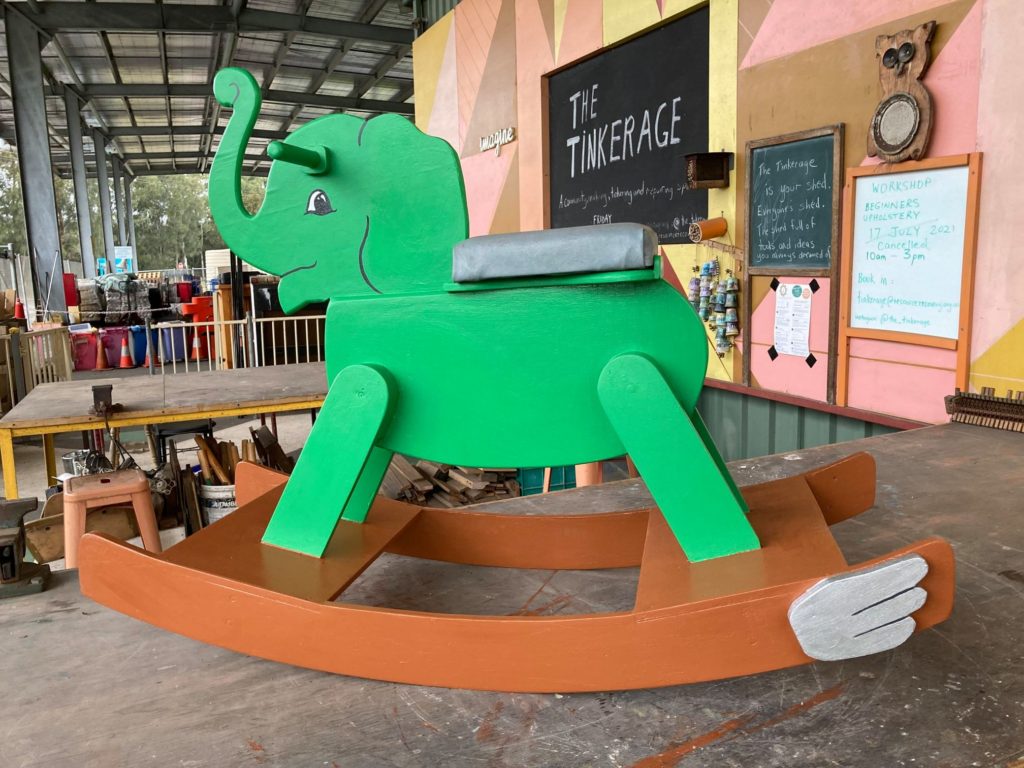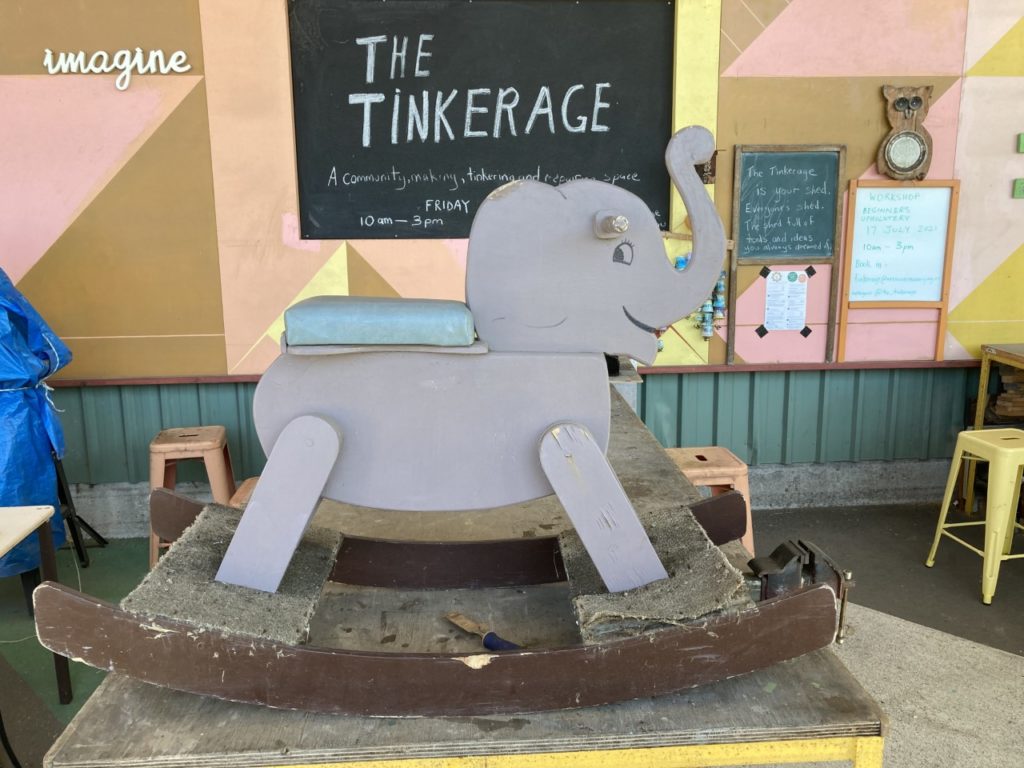
Repair. It’s an art form that grows more important each day as we move towards zero waste and a circular economy. Recently, somebody donated a sad children’s elephant rocker to Revolve Dunmore, Resource Recovery Australia’s reuse shop in Shellharbour (on Dharawal land).
Luckily for this precious item, Revolve Dunmore is also home to The Tinkerage and it’s facilitator, artist Anita Johnson. With some imagination, skill and just a few hours, Anita is transforming the elephant rocker to it’s former glory.
The Tinkerage was closed on Friday due to the COVID-19 restrictions, but I still came into work to lend a hand. I tidied The Tinkerage space and then set to work on repairing this elephant. It was in pretty bad shape, chunks out of the timber, a split leg, a broken rocker and a chipped head. I thought I would share some of the process and ways of fixing things that I used.
Fixing the elephant’s head
The top of the head was really badly bashed, so I drew a different line for the shape of the ear, more of your African elephant than your Indian elephant shape. I cut that out with the jigsaw, then used the “Dremel” to shape and smooth the curves. Fixed!
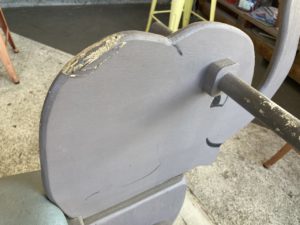
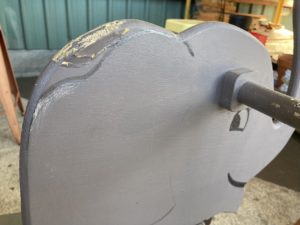
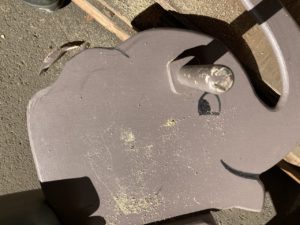

Fixing the broken rocker section
The rocker was splitting so I pried it open further and pushed glue into the crack. I used Staybond epoxy glue, shipbuilding glue, it’s pretty strong stuff. Then clamped it back into straight position. Tip: I put a little bit of plastic between the clamp and the elephant because too often I have glued the clamp to the work and it is hard to get undone!
Next, I wait for it to set and cut a little shape that fits over each side of the fracture and screw this to the rocker. This will make it stronger, but also be decorative.
Fixing the elephants chipped sections of wood
Several sections of wood were chipped and needed to be repaired. I filled them with kneadit multipurpose. This product is a two part compound that you knead together, a type of plastic wood. It sets hard and then you can sand and paint it. I find it is great for fixing rotten sections of wood, eg. window sills etc. Fixed! now to sand it, and then paint.
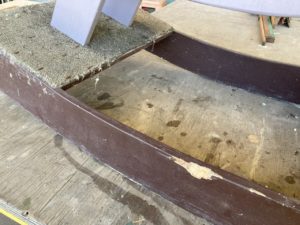
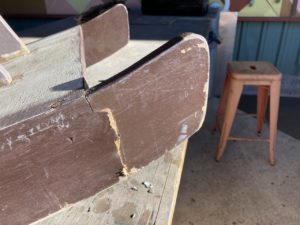
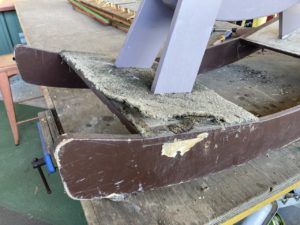
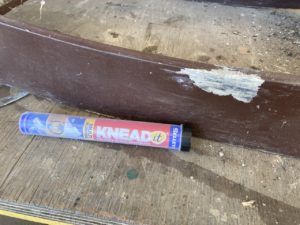
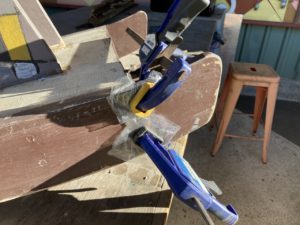
Adding strength
Now that the glue was set on the broken part of the rocker, I cut two wing shapes from marine ply, sanded them and screwed them over the break. This will reinforce that section, and also give a bit of fun to the design. Do you think elephants might fly if they had little wings?
Now that the broken and weak sections are all fixed, I will remove the old paint and give it a fresh colour next week.
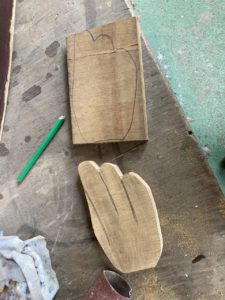

Sanding and stripping the paint
This is how the elephant looks now after sanding and stripping the old paint.
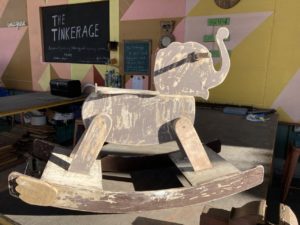
Painting
After working on the elephant for three weeks of Fridays, I finished the elephant rocker today. What do you think we should name him/her?
